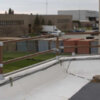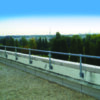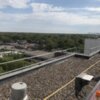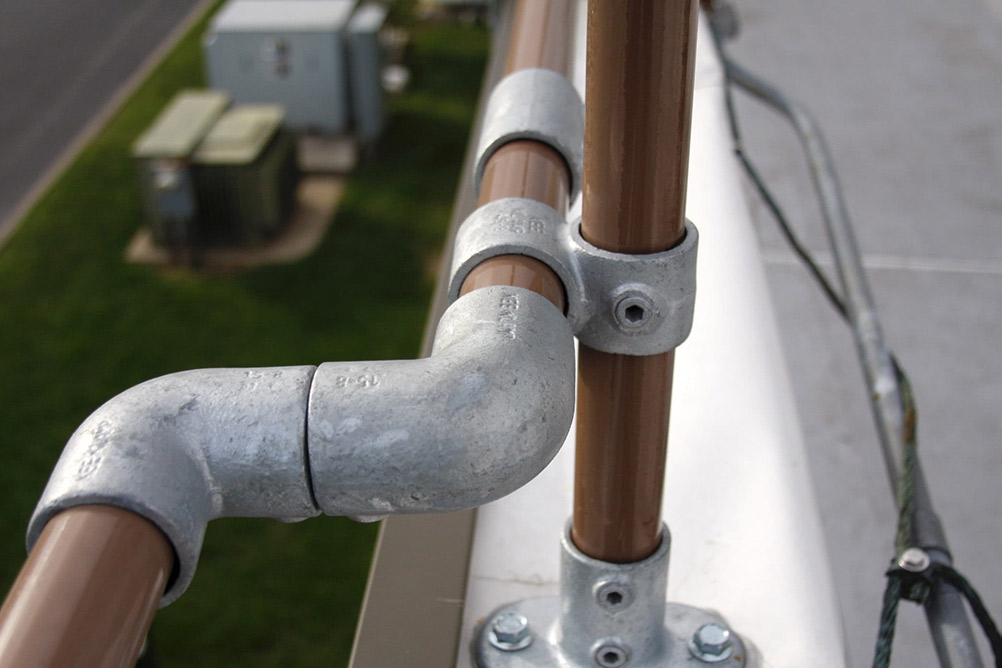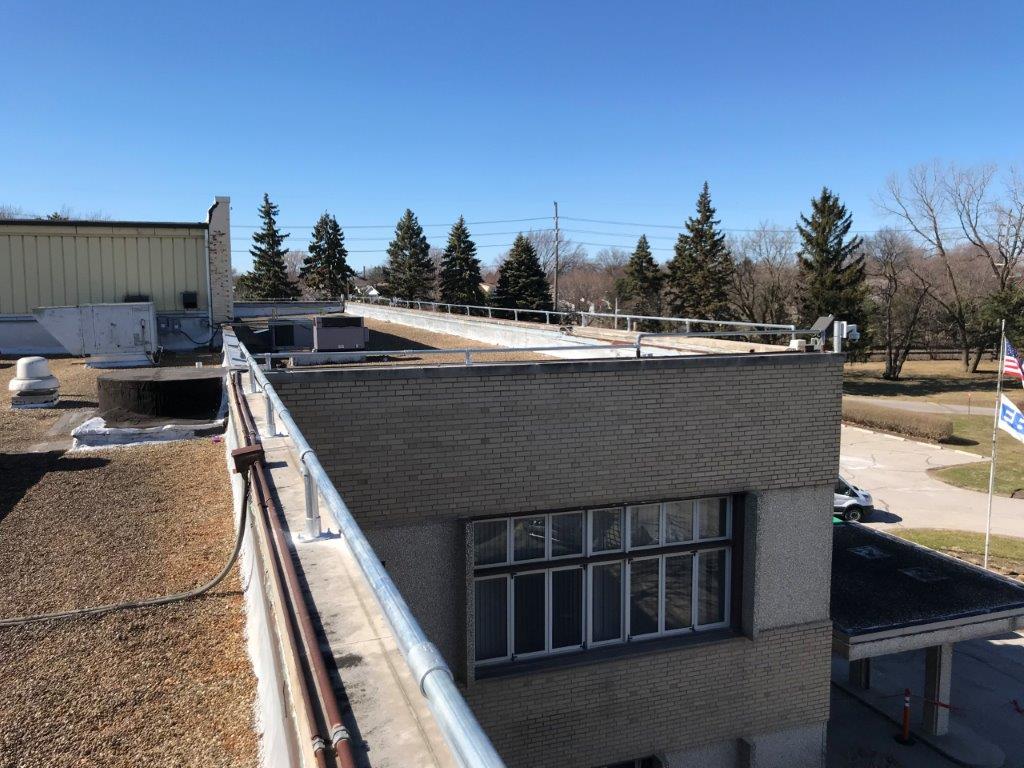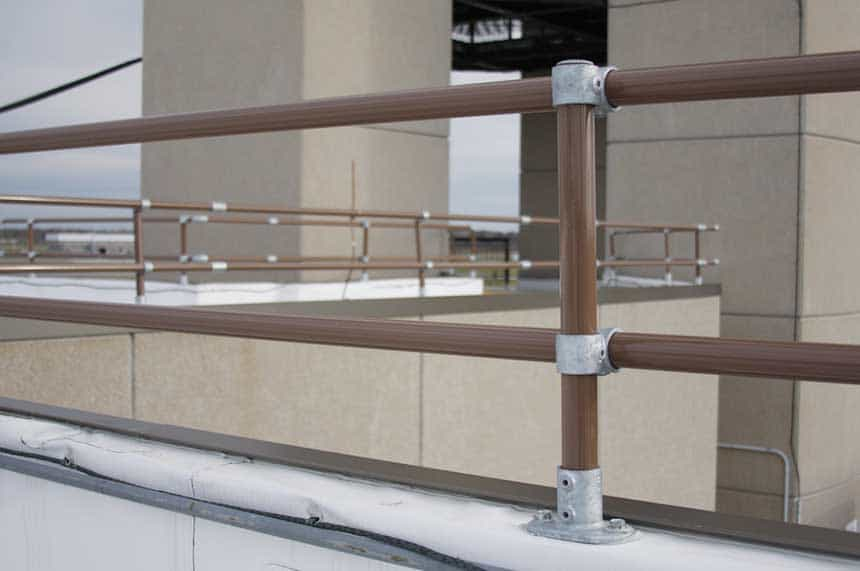OSHA Compliant
Parapet mounted guardrail is designed to meet and exceed OSHA requirements to ensure continued safety.
Maintains Durability
Parapet railing is made from galvanized steel that is corrosion resistant in all types of weather and environments.
Protects Roof Integrity
Connecting railing to a parapet eliminates the need for costly openings into the roof for installation.
Easy Install
Parapet railing only requires basic tools and labor. The pipe and fittings system fastens together with simple set-screws.
Benefits of Parapet Railing
When Do You Need Parapet Railing?
The following is an excerpt from OSHA 1910.29 (b) that covers the responsibility for fall protection on working and walking surfaces. Please review the full code for further information.
1910.29(b)
Guardrail systems. The employer must ensure guardrail systems meet the following requirements:
1910.29(b)(1)
The top edge height of top rails, or equivalent guardrail system members, are 42 inches (107 cm), plus or minus 3 inches (8 cm), above the walking-working surface. The top edge height may exceed 45 inches (114 cm), provided the guardrail system meets all other criteria of paragraph (b) of this section (see Figure D-11 of this section).
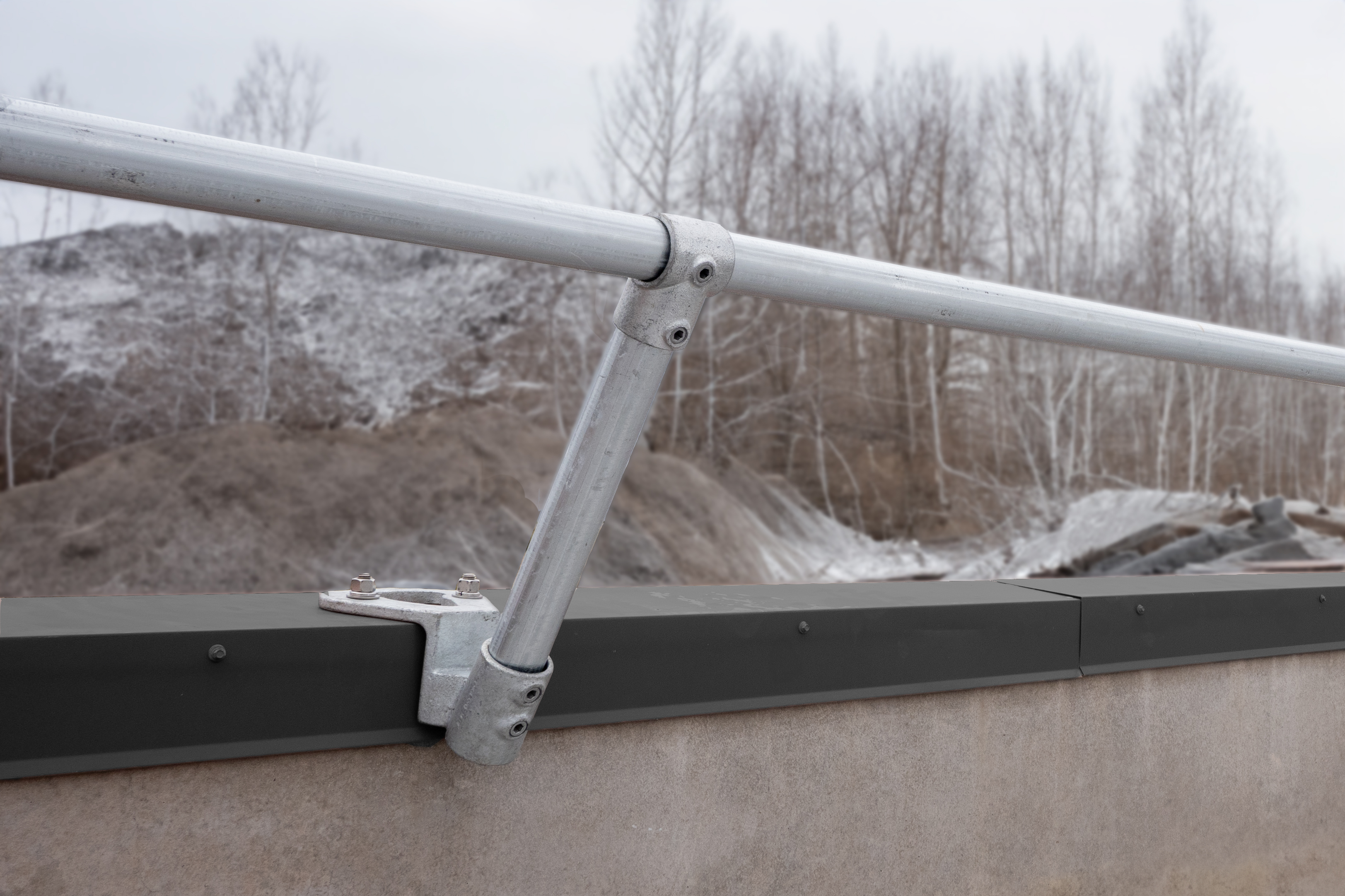
If your parapet is less than 39 inches, then you need a top rail above that parapet to meet the OSHA requirement of 42 inches.
OSHA allows for a small variance of plus or minus 3 inches to the railing. It is important to note that if your railing is only 39 inches in height, if it deflects even a quarter inch from weight or any other force, then it is no longer and OSHA compliant guardrail.
This ensures that in the event of a trip or fall, the parapet (with or without railing) is tall enough to prevent an individual from falling.
The following is an excerpt from OSHA 1910.29 (b) that covers the responsibility for fall protection on working and walking surfaces. Please review the full code for further information.
1910.29(b)(2)
Midrails, screens, mesh, intermediate vertical members, solid panels, or equivalent intermediate members are installed between the walking-working surface and the top edge of the guardrail system as follows when there is not a wall or parapet that is at least 21 inches (53 cm) high:
1910.29(b)(2)(iv)
Other equivalent intermediate members (such as additional midrails and architectural panels) are installed so that the openings are not more than 19 inches (48 cm) wide.
Additionally, if your parapet is less than 21 inches high, then you need a midrail to meet the OSHA standard.
For a midrail, you must ensure that there is no more than a 19 inch space between the top rail and the midrail/parapet.
This is commonly reffered to as the "19-inch sphere rule" which is, like all these regulations, meant to help prevent any fall hazards.
If you would like to learn more about guardrail requirements, check out our full OSHA Guardrail Guide.
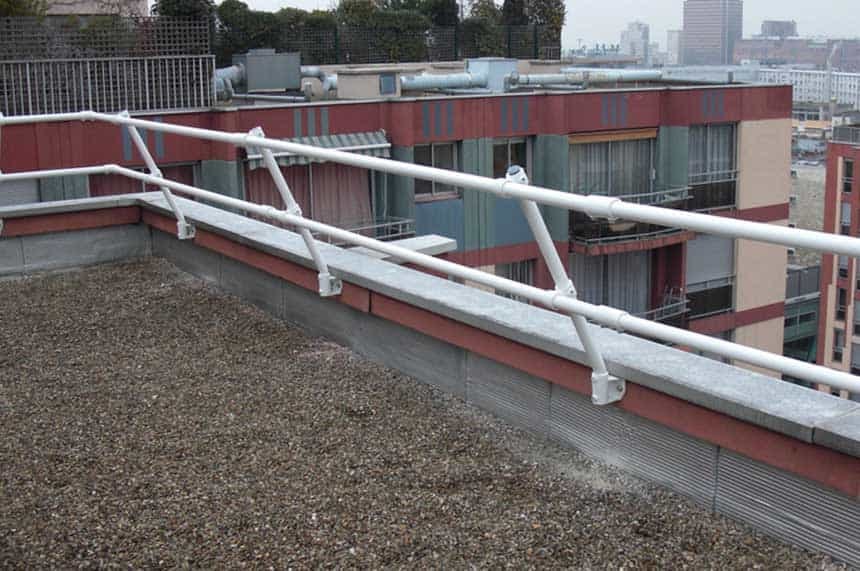
Load Requirements for Parapet Railing
The following is an excerpt from OSHA 1910.29 (b) that covers the responsibility for fall protection on working and walking surfaces. Please review the full code for further information.
1910.29(b)(3)
Guardrail systems are capable of withstanding, without failure, a force of at least 200 pounds (890 N) applied in a downward or outward direction within 2 inches (5 cm) of the top edge, at any point along the top rail.
1910.29(b)(4)
When the 200-pound (890-N) test load is applied in a downward direction, the top rail of the guardrail system must not deflect to a height of less than 39 inches (99 cm) above the walking-working surface.
1910.29(b)(5)
Midrails, screens, mesh, intermediate vertical members, solid panels, and other equivalent intermediate members are capable of withstanding, without failure, a force of at least 150 pounds (667 N) applied in any downward or outward direction at any point along the intermediate member.
Parapet Railing Options
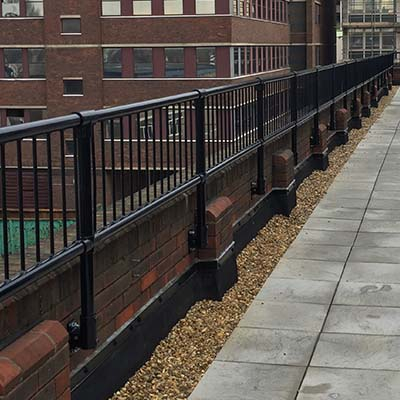
Side Mounted
The side mounted parapet railing mounts on the inside wall of your parapet. This railing can be designed to both inline with the railing or offset to provide a little more distance from the parapet.
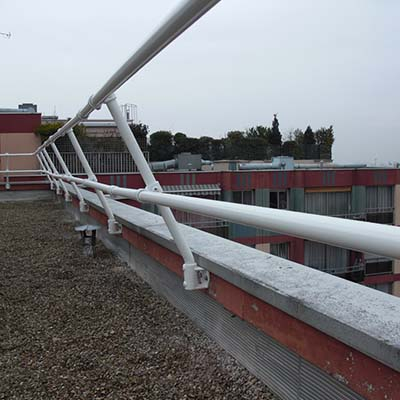
Angle Mounted
The angle mounted parapet railing mounts to the top and side of the parapet to provide a bit of distance between the user and the parapet wall. This railing can also can be designed inline or offset.
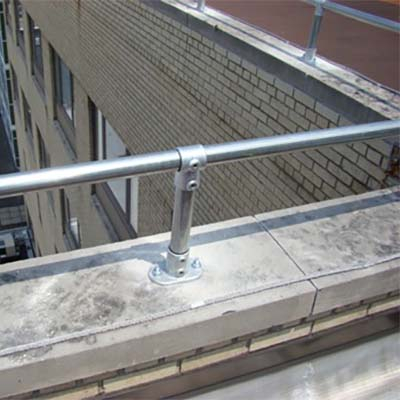
Top Mounted
The top mounted parapet railing mounts on top of the parapet wall and can be designed both inline or offset. All options meet and exceed OSHA standards, are easy to install, and ensure your workers safety.

